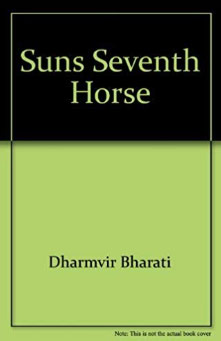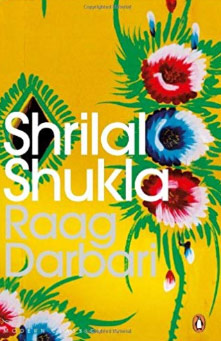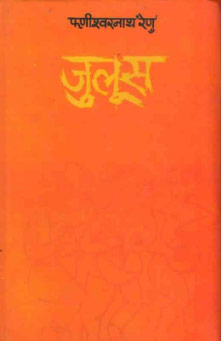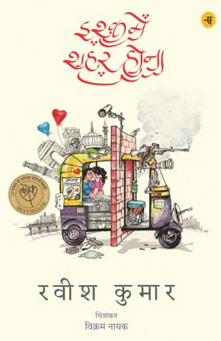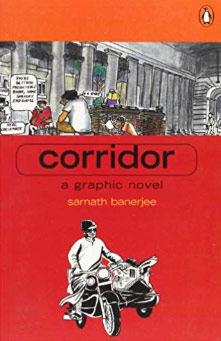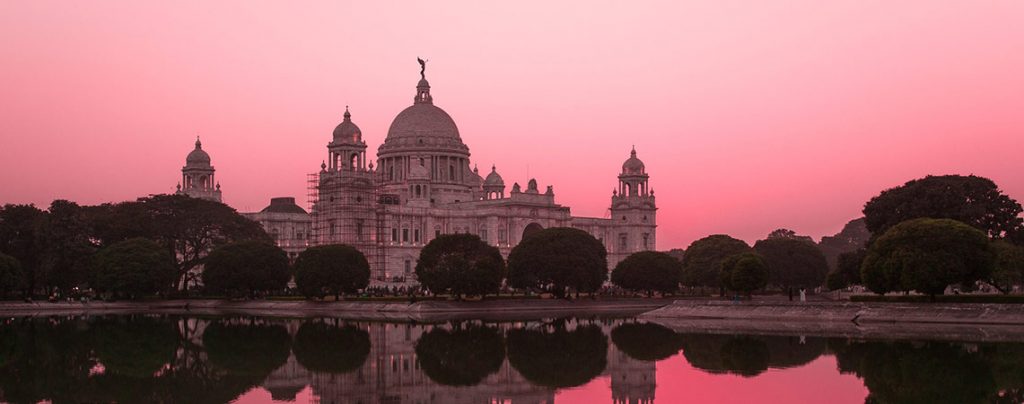

Rajarshi Roy
Rajarshi Roy is an M.phil scholar at the Department of English , Jadavpur University. He is at present working on the idea of ‘uncanny’ in Indian Science Fiction literature. He is a UGC-Rashtriya Uchhatar Sikhya Abhiyan project fellow on a MHRD Project, where he is working on an archival biography of Rabindranath Tagore. He has written widely on the subject of psychoanalysis in literature, detective novels and the history of fascism in several journals of international repute. He had been previously one of the awardees of the Annual Young Scholar Award, by Indian Centre for Philosophical Research-Lucknow, Academic Division
An Article by Rajarshi Roy
A Book for every state in the land of India
For most of us, with a busy schedule, travelling to cities midway, just for the heck of it, is something, we can hardly afford. Cities, mofussils, districts remain shabbily lit stations, in our consciousness, which we pass through at the dead of the night. These places forevermore remain nothing more than their names written on yellow railway concrete index stones, which we rush past in trains in the dead of the night, or like a blur when we are mostly trying to get our phone on ‘National Roaming’. This series will talk about those places, and few books that you must read, in order to get a feel of the gravelly, dusty, little known feel of these places known mostly to people as a transit to get to somewhere else. In this episode we will be covering the region, which is mostly known to people outside this region as the ‘hindi belt/cow belt’ and to people serving in the administrative cadets as the ‘death trail’ (lol.)
The Hindi Belt
The literature coming from these regions speak of a brilliantly colourful similitude across both the stats, be it in descriptions of ‘nukkad politics’ (street plays), or the colourful outcomes and interpretations of caste relationship. It is not a wonder, when it is seen that the literature of these region acted as a catalyst for the ‘Social Novel’ movement all around the country, after the 1930s; and became an exemplary tradition in the Social Novel drive across the nation, by opting for the more progressive and effective ‘Pragativad’ movement over the more classical ‘Chhayavad’ aesthetics. But well lot about literary theory here, and I think I may have moved most of my readers to sleep; so let’s move to the list of places and books that we will speak about:
Allahabad, Uttar Pradesh
As a toddler, one of the primary ways, Allahabad remained immortal in my mind, was how as a kid, while travelling back to our then residence at Jaunpur, I bought my first ever Chacha Chaudhary comic from the Allahabad railway station Wheerler’s stall. Several kraantis later, now that Allahabad has been renamed to Prayagraj, and the place feels like visiting another Vedic age settlement, I still somehow remember the solitary horn rimmed Wheeler’s man, trying to reason with me that Chacha Chaudhary was indeed more badass than Clark Kent.
The book that best describes the feel of this volatile yet rich in literary movements state is – Dharmbir Bharti’s “Suraj Ka Satwaan Ghoda” (The Seventh Horse of the Sun). The novel remains one of the primary ones that actually made me think for a long time, about neighbourhoods, of calumnies that come real from word of mouth; of everything that appears ‘Small Town’, even as I write. There is also a film on the novel, by Shyam Benegal, if reading the book is too much for you.
Link to the Book (Translation)
Link to the Movie
Lucknow/ Dildarnagar…(sic) Shivpalganj, Uttar Pradesh
Queequeg was a native of Kokovoko, an island far away to the West and South. It is not down in any map; true places never are.”
― Herman Melville, Moby-Dick or, The Whale.
This is where it gets interesting! When the place you read about, is not actually a place on a map! The immersive sun of the Nowhere city, seems to bounce off the cadenced pages and stick like beads of sweat to the lonely body. There are perhaps two such Nowhere cities, or “gunj” in Indian literature. If one is Nischindipur (The village of Eternal Reassurance), in Satyajit Ray’s celebrated Pather Panchali its closest hindi speaking cousin would be the sand-papered, loo-ridden, dry as a cow-biscuit, ‘Shivpalgunj’. Shivpalgunj is such a place, that only Shivpalganj could be its example,; it is so far from the Old Town Lucknow, that you only get sweaty like a solitary rice from a Biriyani handi, without emulating the flavour of the same.
To get the sense of a nowhere city that is fuelled by small town lives and politics do read Wright’s translation of Sri Lal Shukla’s ‘Rag Darbari’. It might just be your Friday read, if you are fed up with exit-poll antics and blaming communists for elaichi in your biriyani.
Link to the Translated Edition
Link to the Original Edition
Giridih, Jharkhand
In the 1960s and right till the 80s, world weary Bengalis had cast off Puri and Darjeeling from their maps, and had started buying houses in unknown hamlets in Bihar and Jharkhand just for the lulz of it. Well, it may be lulz for me and others, but they had a serious name for such trips; to go for a “change” they would call it, and recuperating from ill-health would be a primary desire for such people. Interestingly, this inspired a group of Bengali writers to work on such characters and their experiences in the Chhota Nagpur Plateau. While Saradindu Bandopadhyay’s historical novels, were mostly based in the Vindhyanchal region, it has to be said that the landscaping and the imagination was somehow closer to the Chota Nagpur region.
We talk about Giridih, in this context, because of the very peculiar and eerie science fiction stories written by Satyajit Ray around Professor Trilokeshwar Shonku. Crafted in the cult of the ‘intelligent Bengali’, Professor Shonku’s adventures range from the search of the unicorn in Tibet to throwing a spanner into the Imperialist and often Anti-Human politics of the Nazis (yes, that’s right!). But what does he do, in his spare time? He is shown to be based in Giridih, and to be perpetually busy at this laboratory discovering things that at once “cures every disease known to man” or “makes you understand the language of birds”. If you are into science fiction literature with a mild political subtext, Shonku might just be your go to text.
Translated Edition - The Mystery of Munroe Islands and Other Stories
The Diary of A Space Traveller and Other Stories
Purnea, Bihar
As someone who has travelled continuously on the “belt”, both on road and by the railways; Purnea has somehow grown to be an important point in some of my sojourns around the region. So, ‘Little Darjeeling’, as trail bikers call the city, is albeit a quirky etching on the map, which you have no choice but to travel through, if you are enroute Darjeeling, or further beyond that. But Purnea is far more important to me for its importance in refugee history of India. It was one of those very few districts in Eastern Bihar, that housed a wave of Bengali refugee migrant population from then East Pakistan. To the “Indian” consciousness perhaps ‘we” still have not yet been Indian enough; but I remember somehow during our trip to Darjeeling, the “Refugee Memorial” by the highway, made me feel more refugee enough than an Indian.
The story of Purnea is thus perhaps the story, of any other marginal tuppenny-ha’penny town, that remains inscribed in symbols primitive and economical in Phaniswar Nath Renu’s novel “Juloos”. I would not say much about it, but do pick up a copy of it, and understand how the Indian reaction to minorities has not changed much since the Brits would flog them for falling asleep on the till.
Purchase Link
Delhi
Coming to Delhi/ Planning to shift to Delhi
I am writing this post on a rainy Kolkata evening, having decided that I won’t be turning up for my Delhi University PhD interview. So, as I write this, I have a quaint mixture in my mind of faces that I had known in some of my visits to the city. I can almost recollect my first sensations of Delhi, walking past Kamla Nehru College at 8 in the evening, searching for the blink-and-miss hotel that the E-QUAL conference guys at AUD had arranged for in the Green Park neighbourhood; it definitely wasn’t as colourful, as I had hoped it would be. But six years from then, and some five six trips later, it still feels the same bunch of colourful confetti, that only gets trapped in your hair, but does not touch you any more than that. Or maybe it is simply my fault I was reading sensibilities off somebody else’s book and then “Ctrl+C”-ing to my life.
Whatever be the case, if this is your first few days in Delhi, be sure to read Ravish Kumar’s “Ishq Mein Shahar Hona”, not because it might make you lovesick enough to buy Tinder Gold (at this rate I am trying really hard to make this article hip!), but you might just see the reflection of your own face in a cup of horrid milky tea that they make. It might not be able to drive you enough to be involved in whatever you are doing there, but it will spur you enough to skip those “downright militant” 9 a.m. classes at DU and take a metro to a part of the city, that only lives as a red dot on the metro route channel.
Link to the original hindi version:
Link to Akhil Katyal’s translated version:
Leaving Delhi behind/ “Botanising on the Asphalt
No one I know, who has been to Delhi in their early twenties, have left Delhi. They keep coming back to those small beacons of images, someone selling you de-thorned roses at Hauz Khas metro station signal, or the Qureishi kebabvala at Meena Bazar frantically dropping beef kebabs on your paper plate as you wonder “how do I even walk to the metro in this crowd?”. If you think in terms of these small images, and it doesn’t give you hygiene creep watching Aloo Paratha being sold on the streets like golgappa (Try the one guy selling the same outside the Indra Vihar gate, at GTB Nagar. Artist of a guy, he sells kebabs in winter!), then my friend, you haven’t left Delhi at all.
You shouldn’t worry though, if you miss it enough, you will have enough chances in your lifetime, to make an excuse to turn up there. So, in this section about images of the city and other mumbo-jumbo, it is only right if I suggest a graphic novel . Sarnath Banerjee’s graphic novel “Corridor”, is in my belief one of those memorabilia level artefacts, that you should always gift your closest Delhi friend, because else they wouldn’t understand how it means to shuttlecock between two different cities, and also it will make you more street smart about Connaught Place street shop. Pick this up, if Delhi to you is about monkeys, space-ships with drunk Haryanvis (sorry I meant cars), as much as it is about Zafar Mahal and Happy hour at Hauz Khas village. I am perfectly sure, it will give you another city in Delhi, which you will love amidst all the loathing.


